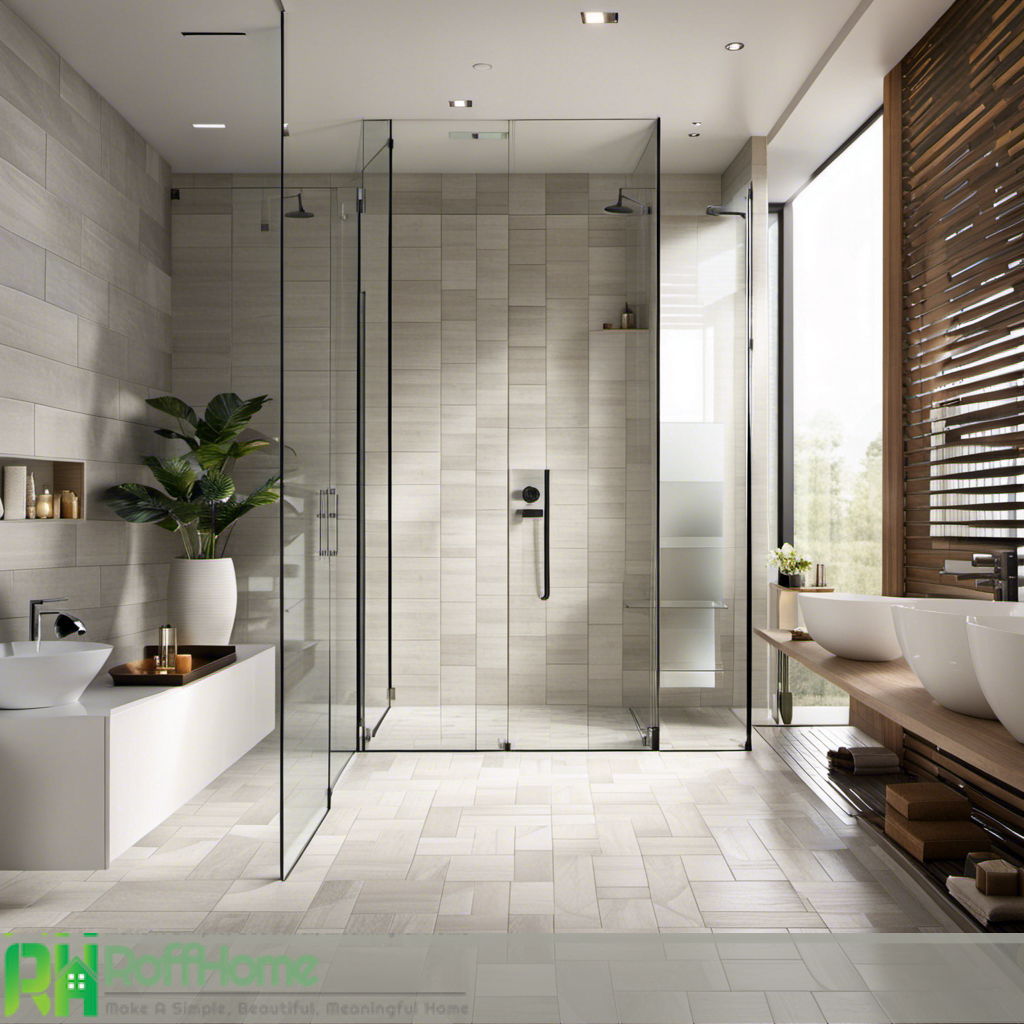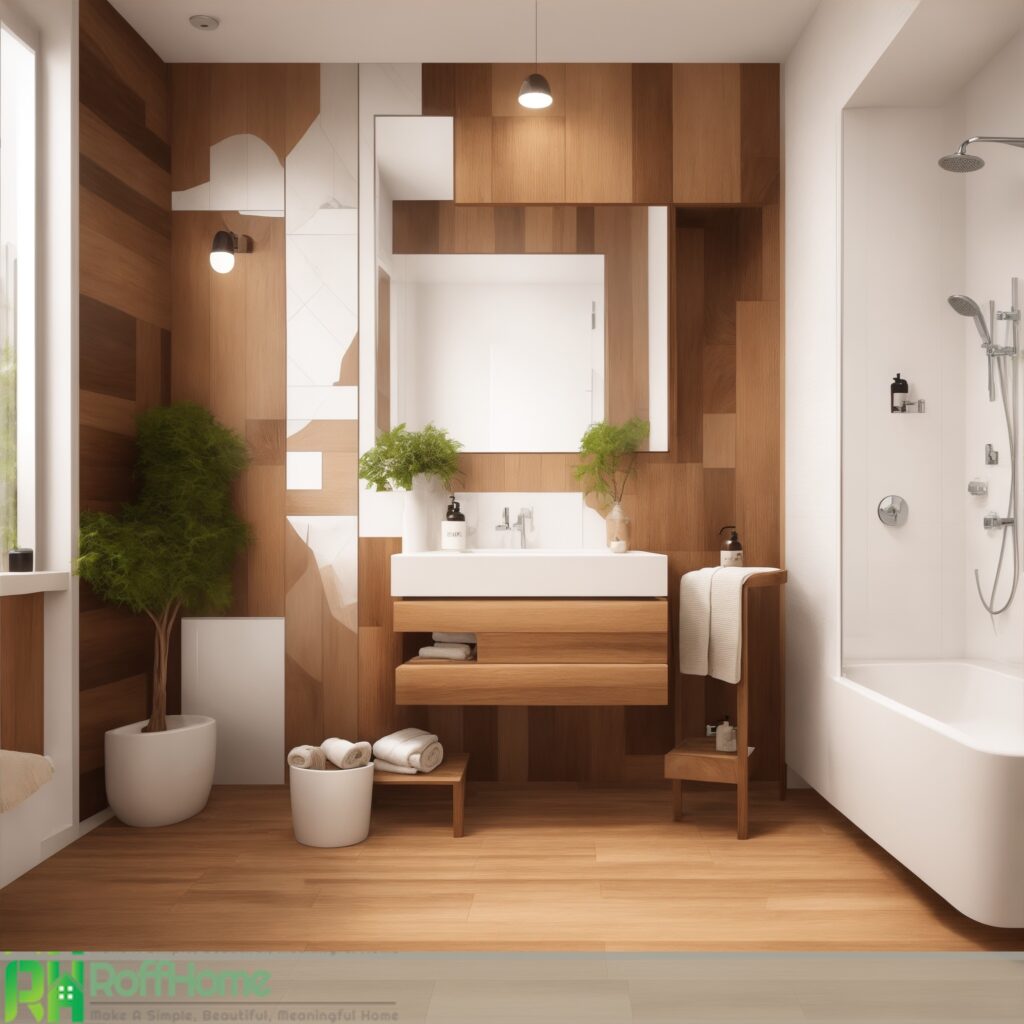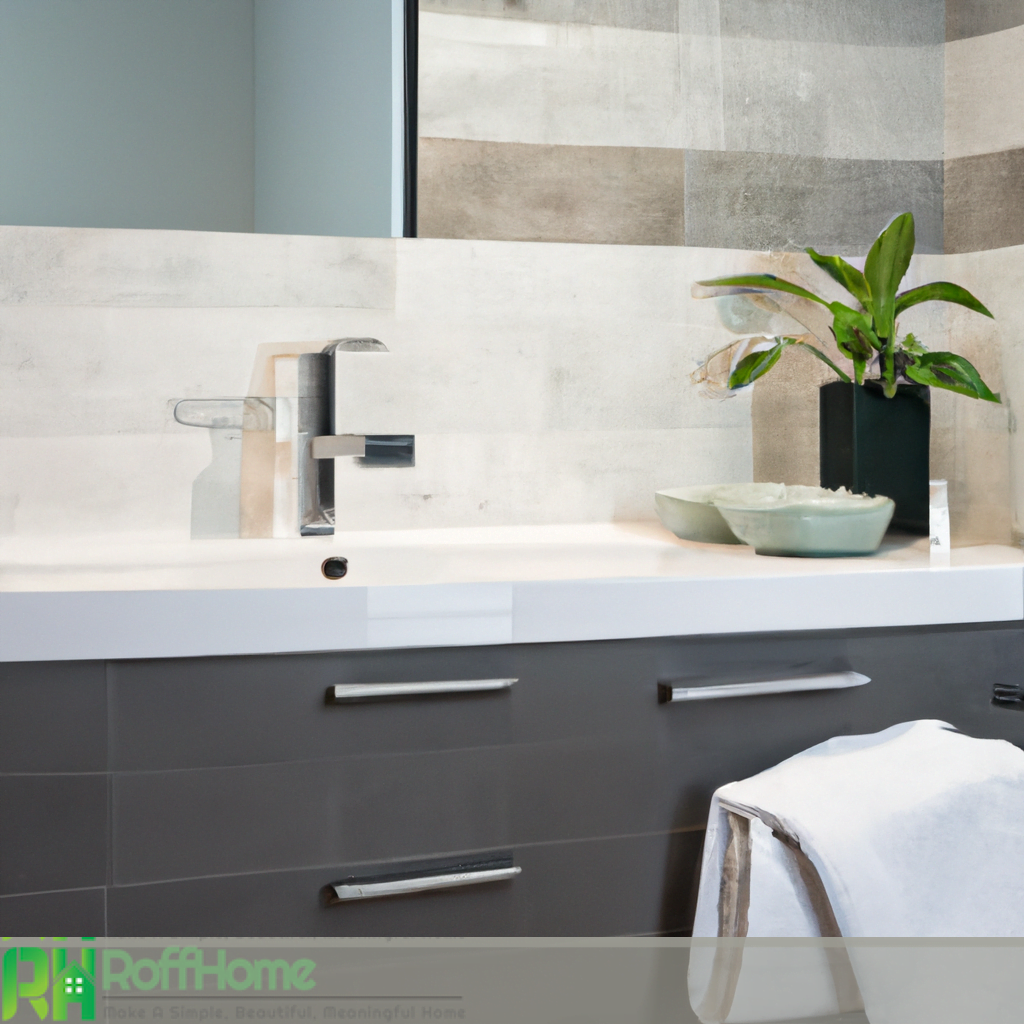Timeless Elegance: 10 Stunning Marble Bathroom Floor Ideas for a Luxurious and Sophisticated Space

Marble bathroom floor ideas offer a luxurious and elegant option for homeowners who want to create a stylish and timeless bathroom space. The unique veins, patterns, and shades that add depth and texture to any design. It is a popular choice for bathroom floors due to its durability, resistance to moisture, and easy maintenance.
When planning a renovation or designing a new bathroom, there are various marble bathroom floor ideas. Homeowners can opt for classic white marble tiles or explore shades like gray, black, or beige. The texture and finish of the marble can also add a unique element to the design, whether it is polished, honed, or matte.
One of the advantages of marble bathroom floors is their ability to create a timeless and elegant look that adds value to your home. Additionally, marble is an eco-friendly natural stone that can be sourced from different parts of the world. However, it is essential to consider the marble cost and maintenance requirements when choosing it as a flooring option. DIY tips and tricks can help homeowners maintain their marble floors and avoid damage.
A comprehensive guide on marble bathroom floor ideas can help you explore the available options, dos and don’ts, and the latest trends in bathroom design. The marble floor options can fit your space and enhance its aesthetics. In summary, marble bathroom floor ideas offer a luxurious and durable option for homeowners who want to create a timeless and stylish bathroom space.
10 Stunning Marble Bathroom Floor Designs for Next Renovation
Marble is a popular choice for bathroom floors, as it offers durability, style, and elegance to any bathroom design. If you are planning a renovation and want to incorporate marble into your bathroom, here are ten stunning marble bathroom floor designs to consider:
Classic White Marble: This timeless design features white marble tiles with subtle grey veins that create a clean and fresh look in your bathroom.
Marble Mosaic: A marble mosaic design uses small marble tiles in various shades and textures to create an intricate pattern that adds depth and interest to your bathroom floor.
Herringbone Marble: A pattern uses rectangular tiles arranged diagonally to create a zig-zag design. This pattern adds texture and dimension to your bathroom floor when used with marble tiles.
Hexagonal Marble: This design features hexagonal marble tiles that create a honeycomb pattern. Its unique and modern design adds a touch of luxury to your bathroom.
Black and White Marble: A black and white marble design uses contrasting colors to create a bold and sophisticated look in your bathroom. This design can be achieved with different tile sizes and shapes.
Inlay Design: An inlay design uses various shapes and sizes of marble tiles to create a custom pattern or image on your bathroom floor. It is a unique and personalized design that adds a personal touch to your space.
Geometric Marble: A geometric marble design uses marble tiles in different shapes, such as triangles, diamonds, or rectangles, to create a modern and artistic look in your bathroom.
Basket Weave Marble: A basket weave pattern uses rectangular tiles arranged in a checkerboard pattern, creating the illusion of woven baskets. Its classic design adds texture and interest to your bathroom floor.
Waterjet Marble: A waterjet design uses high-pressure water to cut marble tiles into intricate patterns and shapes.
Marble Border: A marble border design uses a contrasting border of marble tiles to frame the main section of your bathroom floor. This simple yet elegant design adds definition and style to your space.
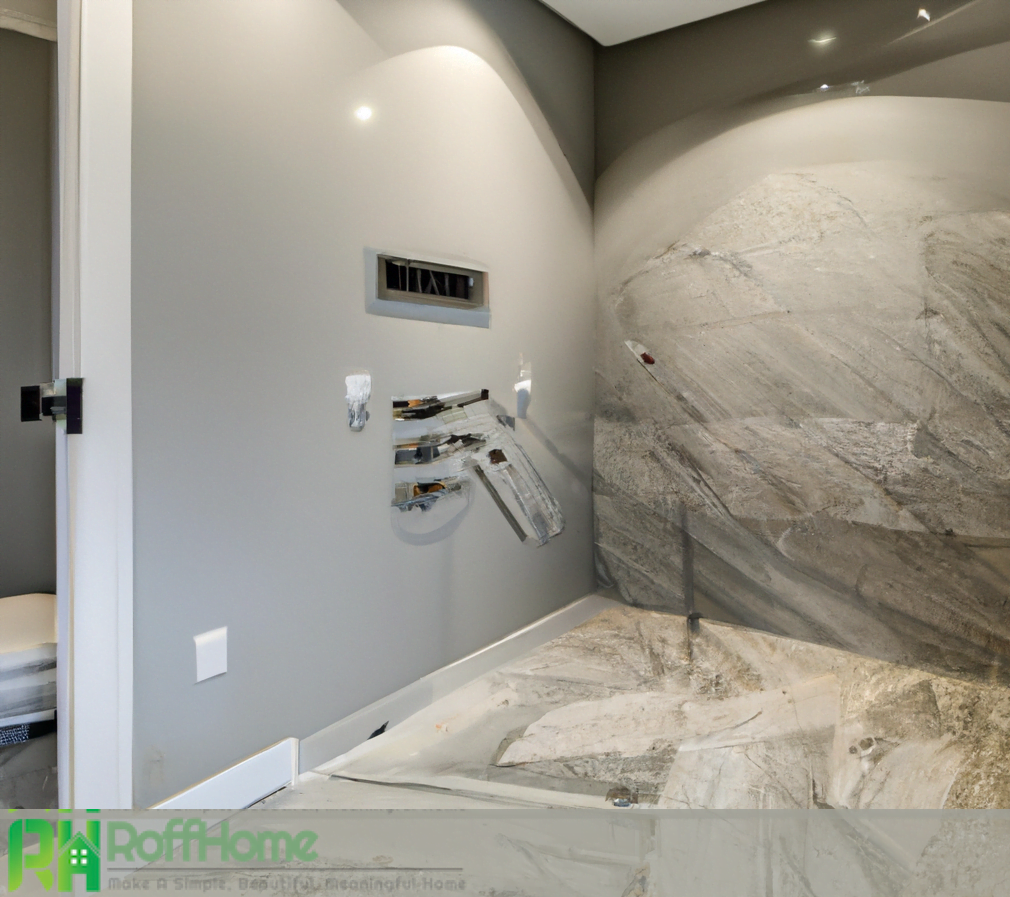
Top Trends in Marble Bathroom Flooring: A Comprehensive Guide.
Marble bathroom flooring has been a popular choice for homeowners for many years, and it continues to be a timeless and elegant option. However, there are constantly new trends in marble flooring that can help homeowners update their bathrooms and create a more modern and stylish look.
Large-format Tiles: Large-format marble tiles are becoming increasingly popular in bathroom flooring. They create a seamless and sleek look, as there are fewer grout lines, and the large size of the tiles helps to make the space feel more open and spacious.
Geometric Patterns: Geometric patterns, such as chevron or hexagonal, are a popular trend in marble flooring. They add interest and dimension to the space and can be achieved with various marble tiles sizes and colors.
Mosaic Designs: Mosaic designs are a classic option for marble bathroom flooring. They can create intricate patterns and designs that add texture and personality to the space.
Natural Finishes: Natural finishes, such as honed or leathered, are becoming increasingly popular for marble bathroom flooring. They offer a more subtle and matte finish that can create a more modern and sophisticated look.
Mixed Materials: Mixing marble with other materials, such as wood or concrete, is a trend that is gaining popularity in bathroom flooring. This can create a unique and personalized look that blends different textures and colors.
Bold Colors: While classic white marble remains a popular choice, bold and dark marble colors, such as black or green, are emerging as a trend in bathroom flooring. These colors can add drama and depth to the space.
Texture: Textured marble, such as brushed or hammered, is a trend that can add a unique element to your bathroom flooring. It can create a more rustic or industrial look that adds interest and personality to the space.
Designing Bathroom with Marble Floors: Ideas and Inspirations
Designing a bathroom with marble floors requires careful consideration of the different design elements, such as color, texture, pattern, and layout. Here are some ideas and inspirations for designing a bathroom with marble floors:
Classic White Marble: Classic white marble is popular for bathroom floors. It creates a clean and timeless look that can be paired with various colors and textures in the rest of the bathroom.
Colored Marble: Colored marble, such as black, green, or blue, can add drama and depth to the bathroom floor. It can be paired with neutral colors in the rest of the bathroom to create a balanced and stylish look.
Mixed Materials: Mixing marble with other materials like wood or concrete can create a unique and personalized look. For example, a marble floor paired with a wooden vanity can create a warm and inviting atmosphere.
Geometric Patterns: Geometric patterns, such as herringbone or hexagonal, can add interest and dimension to the bathroom floor. They can be achieved with different sizes and colors of marble tiles to create a personalized look.
Mosaic Designs: Mosaic designs can create intricate patterns and designs that add texture and personality to the bathroom floor. They can be achieved with different sizes and colors of marble tiles and can be used as a focal point in the bathroom.
Texture: Textured marble, such as brushed or hammered, can add a unique element to the bathroom floor. It can create a more rustic or industrial look that adds interest and personality to the space.
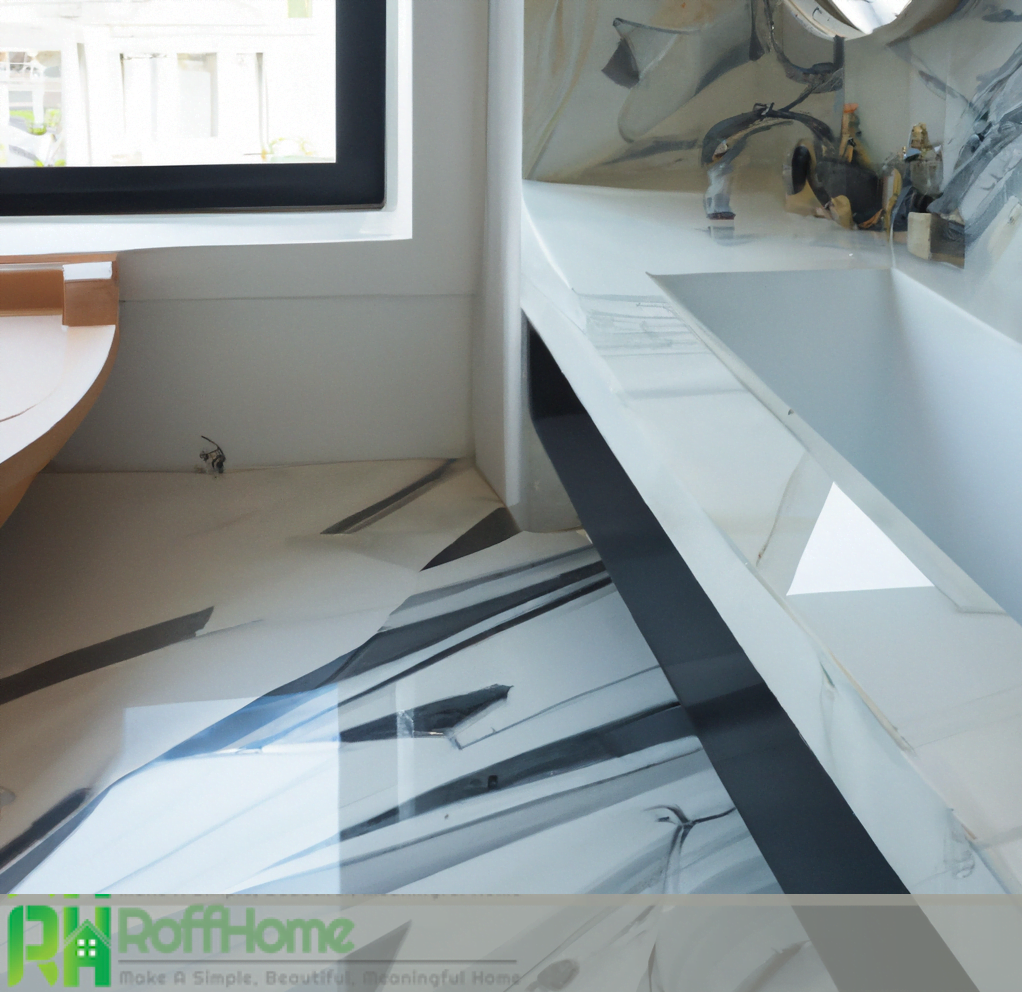
Choose the Right Marble for Your Bathroom Floor
Consider the Color: Marble is available in various colors, from classic white to darker hues. Consider the color scheme of your bathroom and choose a marble that complements it. For example, a white marble floor can create a clean and bright look, while a darker marble can create a more dramatic effect.
Check Durability: Marble is a durable natural stone, but not all types of marble are equally durable. Look for marble that is resistant to scratches, stains, and moisture. Polished marble is more susceptible to scratches, while honed or matte finishes can be more durable.
Look for Texture: Marble can have different textures, such as smooth or veined. Consider the texture of the marble and how it will complement the other materials in your bathroom. A veined marble can create a more natural and organic look, while a smooth marble can create a more modern and sleek look.
Consider the Size and Shape: Marble tiles come in different sizes and such as square, rectangular, or hexagonal. Consider the size and shape of the marble tiles and how they will fit into your bathroom space.
Think About Maintenance: Marble requires regular maintenance to look its best. For example, honed or matte finishes can be easier to maintain than polished finishes.
The Cost of Marble Bathroom Flooring: Is it Worth the Investment?
Marble is a luxurious and natural stone that can add beauty and value to any bathroom. However, it is also a costly material that may require a significant investment.
Cost of Material: Marble is expensive, and the cost can vary depending on the type and quality of marble. On average, the cost of marble flooring can range from $10 to $50 per square foot.
Installation Cost: Installing marble bathroom flooring can also be significant, as it requires skilled professionals to ensure a proper installation. The installation cost can vary depending on the design’s complexity and the bathroom’s size.
Maintenance Cost: This includes sealing, cleaning, and polishing. The maintenance cost can vary depending on the bathroom size and the user level.
Return on Investment: Investing in marble bathroom flooring can add value to the home and increase its resale value. However, it may not provide a significant return on investment if the installation and maintenance cost exceeds the home value increase.

Installing Marble Bathroom Flooring: Cost, Time, and Process
Cost: The type and quality of marble, and the installation method. The installation costs range from $5 to $15 per square foot. Getting a detailed estimate from a professional installer is essential to determine the project’s cost.
Time: The time it takes to install marble bathroom flooring can vary depending on the design’s complexity and the bathroom’s size. On average, it can take several days to install marble flooring, including preparing the subfloor, installing the tiles, and grouting.
Process: The process of installing marble bathroom flooring typically involves the following steps:
- Layout and cutting of the tiles: The installer will lay out and cut them to fit the bathroom space.
- Installation of the tiles: The tiles will be installed using a mortar adhesive, and spacers will be used to ensure even spacing between tiles.
- Grouting: Once the tiles are installed, grout will be applied to fill in the gaps between the tiles.
- Sealing: After the grout has dried, the installer will apply a sealer to protect the marble and make it easier to maintain.
Professional Installation: It is recommended to hire a professional installer to ensure a proper and safe installation. A professional can also advise on the best type and quality of marble for your bathroom flooring.
Marble floor maintenance tips for bathrooms
Marble bathroom flooring can add a touch of luxury and elegance to the space. However, marble requires regular maintenance to preserve its beauty and durability. Here are some tips for maintaining marble bathroom floors:
Clean up spills immediately: Marble is porous and can absorb liquids, which can cause staining. Wipe up any spills immediately using a clean, dry cloth to prevent stains.
Use a pH-neutral cleaner: Harsh chemicals and acidic cleaners can damage marble. Use a pH-neutral cleaner designed for the marble to avoid damaging the stone.
Avoid abrasive cleaners and scrubbers: Scrubbing with abrasive materials can scratch the surface of the marble, leading to damage and dulling of the finish.
Use rugs and mats: Place rugs or mats in high-traffic areas and near sinks to prevent scratches and water damage.
Avoid contact with hard or sharp objects: Marble is prone to chipping and cracking, so avoid placing heavy objects or sharp items directly on the surface.
Regularly dust and sweep: Regularly dust and sweep your marble floor to prevent dirt and debris from scratching or staining the surface.
Consider professional maintenance: Hire a professional marble cleaning and restoration service for deeper cleaning and maintenance.
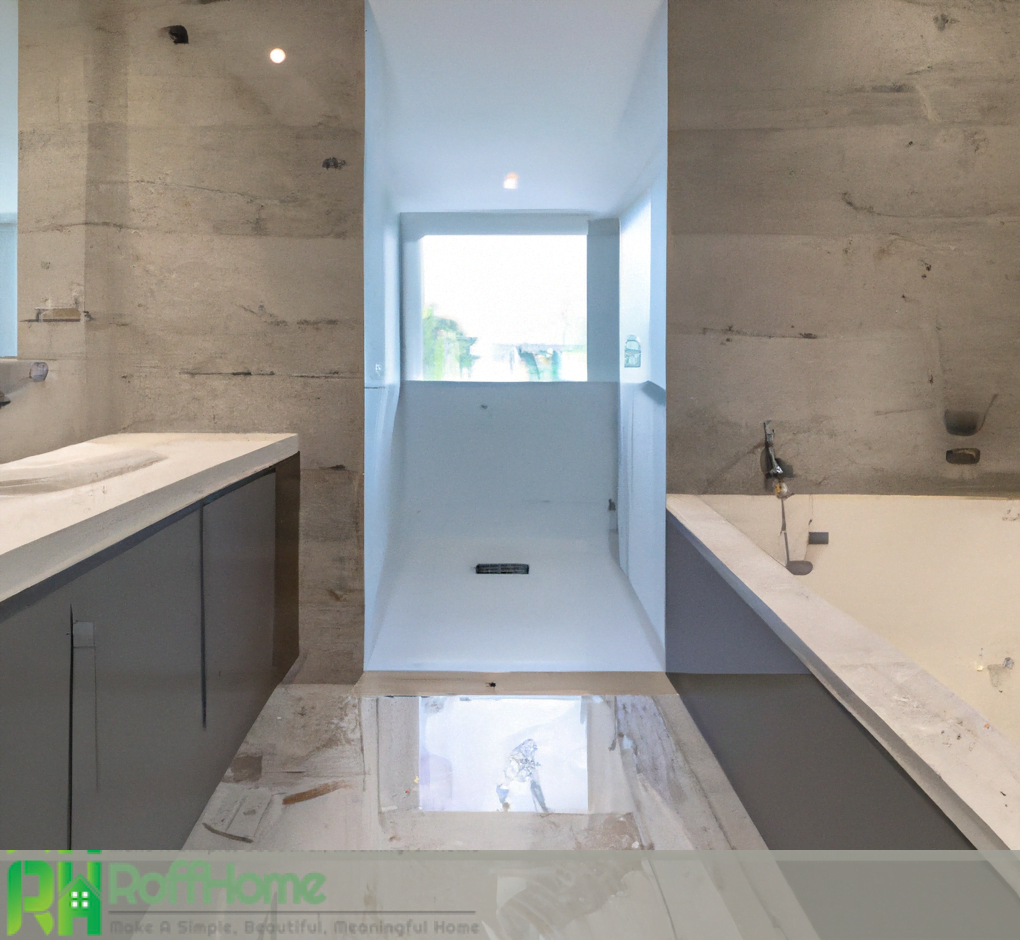
Pros and cons of using marble for bathroom flooring
Marble is a popular choice for bathroom flooring due to its natural beauty, durability, and unique patterns.
Pros:
Elegance and beauty: Marble flooring adds a touch of luxury and elegance to any bathroom. The natural veining and marble patterns create a unique and timeless look that can enhance the overall aesthetic of your space.
Resale value: Installing marble flooring in your bathroom can increase the resale value the home, as it is a highly sought-after feature.
Cons:
Porosity: Marble is a porous stone that can absorb liquids and stains, making it susceptible to water damage and discoloration. Regular sealing is required to protect it from moisture.
Cost: Marble flooring can be expensive to install compared to other materials, and the cost can vary depending on the quality and type of marble.
Maintenance: Marble requires regular maintenance to preserve its beauty and durability. This can include sealing, cleaning, and avoiding harsh chemicals or abrasive cleaners.
Slippery when wet: Marble can be slippery, a safety hazard in the bathroom. Using rugs or mats in high-traffic areas is important to prevent slips and falls.
In conclusion, marble bathroom floors offer a luxurious and timeless look with various design options to suit any style. From classic white marble to bold geometric patterns, there are endless possibilities for creating a stunning bathroom. With proper maintenance and care, marble can be a long-lasting and worthwhile investment.

